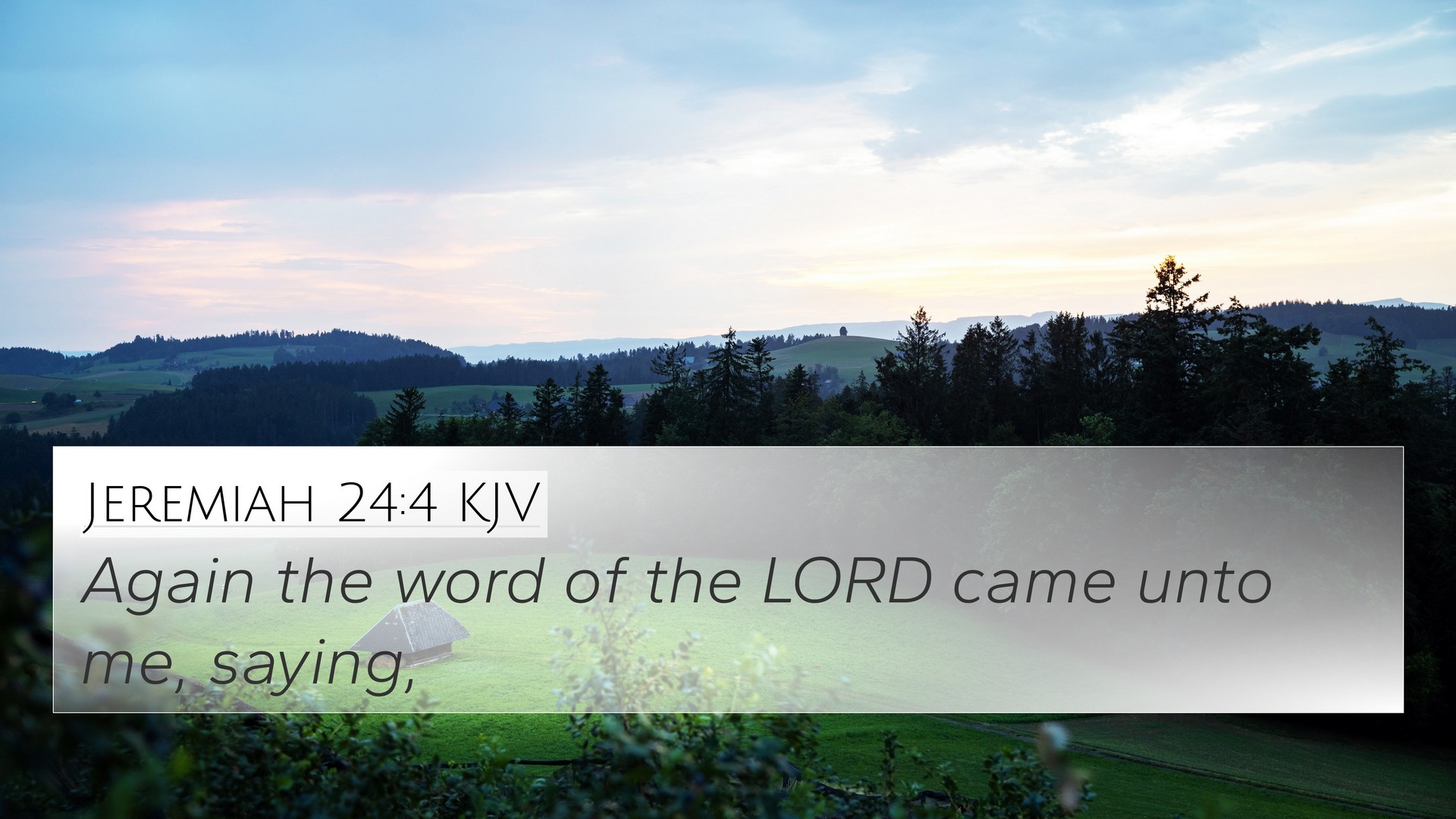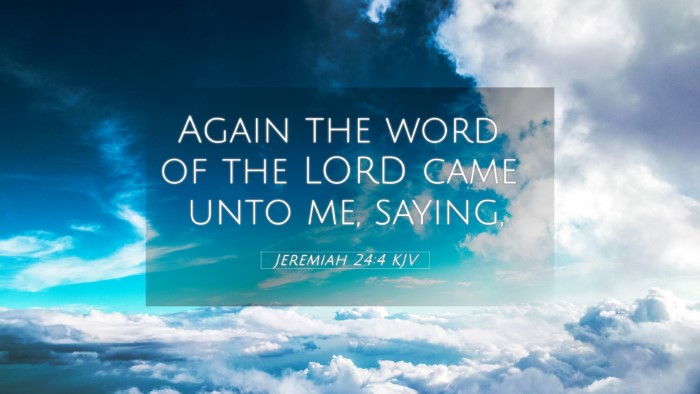Understanding Jeremiah 24:4
Jeremiah 24:4 states: “Then the word of the Lord came to me, saying,” which indicates the divine origin of the message that follows. This verse marks the beginning of a revelation that contrasts two groups of people symbolized by two baskets of figs, one containing good figs and the other containing bad ones.
Contextual Background
The prophet Jeremiah, often known as the weeping prophet, delivered messages during turbulent times for the nation of Israel. This verse is situated after Jerusalem's fall and is part of a broader message from God regarding judgment and hope.
Key Themes and Insights from Commentaries
-
Divine Communication:
Matthew Henry emphasizes the significance of God's direct communication to His prophets. The phrase "the word of the Lord came to me" illustrates that the prophet is acting as a mouthpiece for divine revelations, a fundamental aspect of prophetic ministry.
-
Symbolism of the Figs:
Albert Barnes points out the use of figs as a symbol of the people of Judah. The good figs represent those whom God would preserve for restoration, while the bad figs symbolize those destined for destruction. This dual imagery highlights God’s mercy and judgment intertwined with hope and despair.
-
Judgment and Restoration:
Adam Clarke notes that the discourse illustrated by the baskets signifies God's promises of restoration to those who remain faithful, contrasting their fate with those who turn away from Him.
Biblical Cross-References
Jeremiah 24:4 connects to numerous other scriptures that resonate with its themes:
- Jeremiah 29:11: “For I know the plans I have for you...” – Both verses underscore God's intention to care for and restore His people.
- Ezekiel 11:16: “I will be a little sanctuary for them...” – God promises a place of safety for His chosen remnant.
- Romans 11:5: “So too, at the present time there is a remnant chosen by grace.” – This New Testament verse parallels the theme of preservation present in Jeremiah 24.
- Isaiah 40:1: “Comfort, comfort my people, says your God.” – A similar call to comfort and assurance following judgment.
- Matthew 10:16: “I am sending you out like sheep among wolves.” – Like how figs symbolize two destinies, believers navigate a world of opposing forces.
- 2 Corinthians 2:14: “But thanks be to God, who always leads us in triumphal procession in Christ...” – Affirms God’s ultimate victory over circumstances.
- Luke 13:6-9: The parable of the barren fig tree signifies God's patience and desire for repentance.
Thematic Bible Verse Connections
The connections between these scripture verses can shed significant light on the themes of hope, judgment, and God’s unwavering commitment to those who remain faithful. Understanding these relationships helps deepen our comprehension of God’s overarching narrative throughout the Bible.
Practical Application and Reflection
This verse encourages believers to recognize the grace of preservation and restoration. The examination of good and bad figs allows us to reflect on our spiritual state and our relationship with God. Just as God distinguishes between those who are true to Him and those who are not, we are prompted to examine our lives in light of His word.
Conclusion
In conclusion, Jeremiah 24:4 serves as a powerful reminder of God's communication and intentions. By studying this verse alongside its cross-references, readers can appreciate the depths of God's plans for humanity and the consequences of our choices.
Bible Study Tools
For those interested in deepening their study, various tools for Bible cross-referencing include:
- Bible Concordance: A valuable resource for finding scripture by keywords.
- Bible Cross-Reference Guide: Assists in connecting related verses and themes throughout the Bible.
- Cross-Reference Bible Study: Methods designed to enhance understanding through inter-Biblical dialogue.


